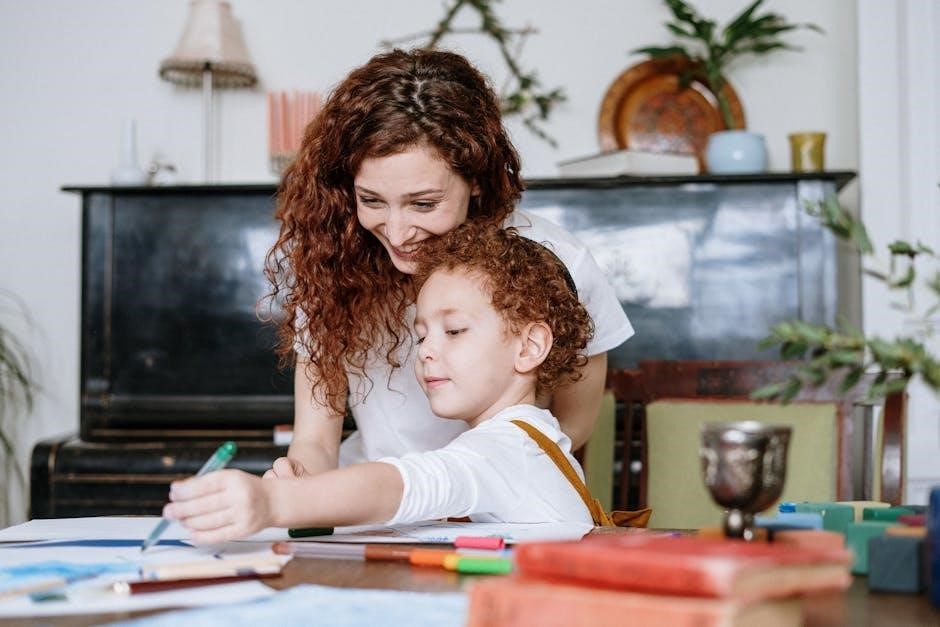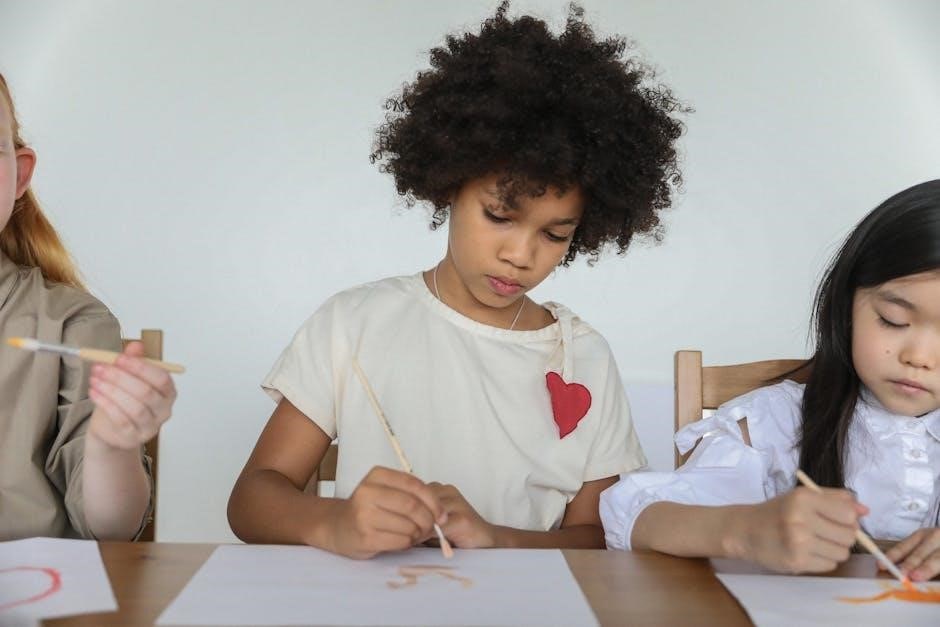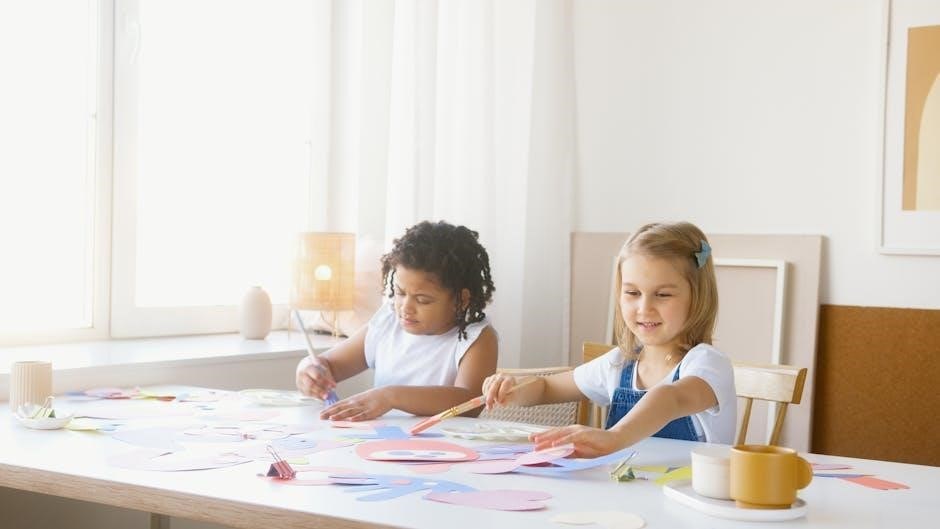Listen and draw activity instructions introduce students to creative expression methods using
- simple
steps and engaging materials online always.
Overview of the Activity
The listen and draw activity is a fun and interactive way to engage students in the learning process, promoting creativity and self-expression through various
- artistic
methods. This activity involves listening to a story or set of instructions and then drawing a picture based on what was heard. The activity can be adapted to different age groups and skill levels, making it accessible to a wide range of students. By using online resources and multimedia materials, teachers can create a more immersive and engaging experience for their students. The activity can also be used to assess students’ understanding of the material and their ability to follow instructions. Overall, the listen and draw activity is a valuable tool for teachers to promote learning and creativity in the classroom, using
- different
techniques and materials to achieve this goal, every day.

Benefits of Listen and Draw Activities
Listen and draw activities enhance cognitive skills and improve focus through creative engagement always online.
Improving Listening Skills
Improving listening skills is a crucial aspect of the listen and draw activity instructions, as it enables students to accurately comprehend and interpret the given information. By following the instructions carefully, students can develop their critical thinking skills and attention to detail. The activity requires students to focus on the speaker’s voice and tone, which helps them to improve their auditory perception. Additionally, the listen and draw activity instructions provide an opportunity for students to practice active listening, asking questions, and clarifying doubts. This helps to build their confidence and fluency in the language. With regular practice, students can significantly improve their listening skills, leading to better academic performance and effective communication. The activity is designed to be engaging and interactive, making it an enjoyable experience for students to learn and improve their listening skills through various online resources;
Enhancing Creativity
Listen and draw activities are an effective way to enhance creativity in students, allowing them to express their thoughts and ideas through art. By providing a platform for self-expression, these activities help students develop their imagination and think outside the box. The use of various materials and techniques, such as colors, shapes, and textures, enables students to explore different forms of creative expression. As students engage in listen and draw activities, they learn to communicate their ideas and emotions in a unique and innovative way. This, in turn, helps to build their confidence and develop a sense of pride in their creative abilities. With regular practice, students can refine their skills and develop a more nuanced understanding of the creative process, leading to enhanced creativity and a more expressive personality. Listen and draw activities are a fun and engaging way to foster creativity.

Preparation for the Activity
Preparation involves gathering necessary materials and setting up a conducive environment for students to participate effectively always online using various tools and resources available.
Gathering Materials
To begin the listen and draw activity, it is essential to gather the necessary materials, including paper, pencils, markers, and crayons.
These materials can be easily found in most classrooms or online stores, and they provide students with a variety of tools to express their creativity.
A list of materials can be created and shared with students and parents to ensure everyone is prepared for the activity.
Additionally, having a variety of materials available allows students to choose the tools that work best for them and their individual learning styles.
The internet provides a wealth of information on the types of materials that can be used for listen and draw activities, and it can be a valuable resource for teachers and parents.
By gathering the necessary materials, teachers can create a supportive and engaging learning environment that fosters creativity and imagination in their students.
This helps to ensure a successful and enjoyable listen and draw activity for all participants.
Setting Up the Environment
To create an ideal setting for the listen and draw activity, consider the physical space and materials needed. A quiet and comfortable area with tables and chairs is essential. Ensure that each student has a pencil, eraser, and paper to work with. Additionally, a whiteboard or display screen can be used to provide visual aids and instructions. Organize the materials in a way that allows students to easily access them. Consider the lighting and temperature of the room to ensure it is conducive to learning. By setting up the environment in this way, students will be able to focus on the activity and express their creativity effectively. The use of technology such as computers or tablets can also be incorporated to enhance the learning experience. This will help to create a engaging and interactive environment for the students.

Conducting the Listen and Draw Activity
Teachers conduct the activity by providing clear audio instructions online using multimedia resources effectively always with students.
Providing Clear Instructions
Providing clear instructions is crucial for a successful listen and draw activity, as it helps students understand what is expected of them. Teachers should use simple language and Break down complex tasks into smaller, manageable steps, using lists like
- step-by-step guides
to ensure everyone is on the same page. The instructions should be easy to follow and understand, avoiding any confusion or misinterpretation. By doing so, students will be able to focus on the activity and produce their best work. Clear instructions also help to reduce anxiety and stress, allowing students to enjoy the activity and learn from it. Furthermore, providing clear instructions shows respect for the students’ time and effort, and helps to build trust between the teacher and the students, which is essential for a positive and productive learning environment, with the use of
- ordered lists
for clarity.
Encouraging Student Participation
To encourage student participation in listen and draw activities, teachers can use various methods such as creating a comfortable and supportive environment, providing positive feedback, and encouraging students to share their work with their peers. This can be achieved by setting up a display area in the classroom where students can showcase their drawings, or by having a sharing session where students can explain their thought process and inspiration behind their artwork. By doing so, students will feel more motivated to participate and engage in the activity, and will also develop important skills such as communication, self-expression, and confidence. Additionally, teachers can also provide opportunities for students to work in pairs or small groups, which can help to foster collaboration, creativity, and mutual respect among students. This approach can help to create a positive and inclusive learning environment.

Assessing Student Understanding
Evaluating student drawings and written descriptions helps teachers assess understanding of listen and draw activities effectively always online.
Evaluating Drawings
Evaluating drawings is a crucial step in the listen and draw activity, allowing teachers to assess student understanding and identify areas for improvement, using methods such as reviewing artwork for accuracy and completeness, and assessing student ability to follow instructions and convey messages through their drawings, considering factors like creativity and attention to detail, and providing constructive feedback to help students refine their skills and build confidence in their artistic abilities, which can be achieved through one-on-one discussions or written comments, and by using rubrics or scoring guides to ensure consistency and fairness in the evaluation process, and to help students develop their critical thinking and problem-solving skills, and to encourage them to take risks and try new things, and to foster a growth mindset and a love of learning, and to promote academic excellence and artistic expression.
Providing Feedback
Providing feedback is a crucial aspect of the listen and draw activity, allowing students to understand their strengths and weaknesses. Teachers can use various methods to provide feedback, including verbal comments, written notes, and visual aids like diagrams and charts. The feedback should be constructive and specific, focusing on the student’s drawing skills, creativity, and ability to follow instructions. By using
- clear
and concise language, teachers can help students improve their listening and drawing skills. Additionally, feedback can be provided through peer review, where students can learn from each other’s strengths and weaknesses. This helps to create a supportive and collaborative learning environment, where students feel encouraged to take risks and try new things. Overall, providing feedback is essential to the success of the listen and draw activity, and should be done in a way that is helpful and supportive.


